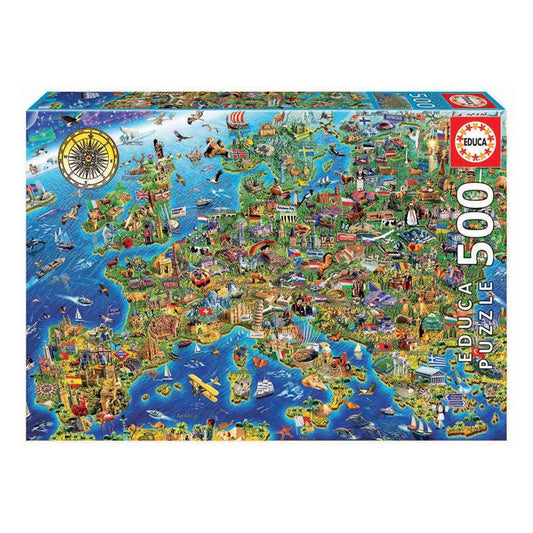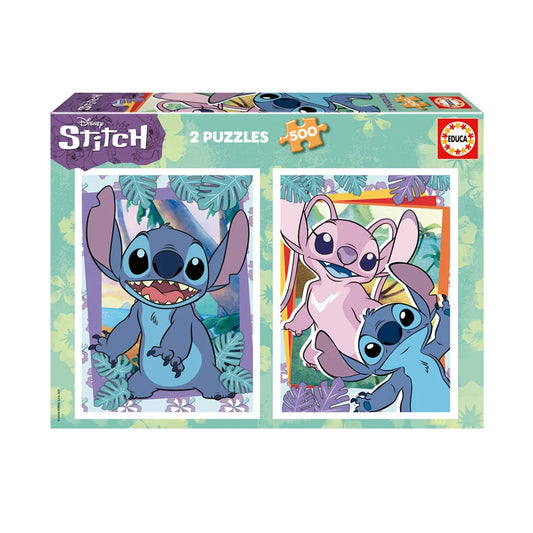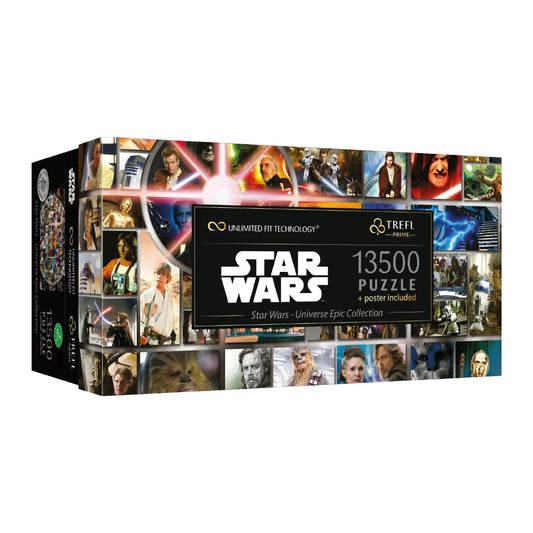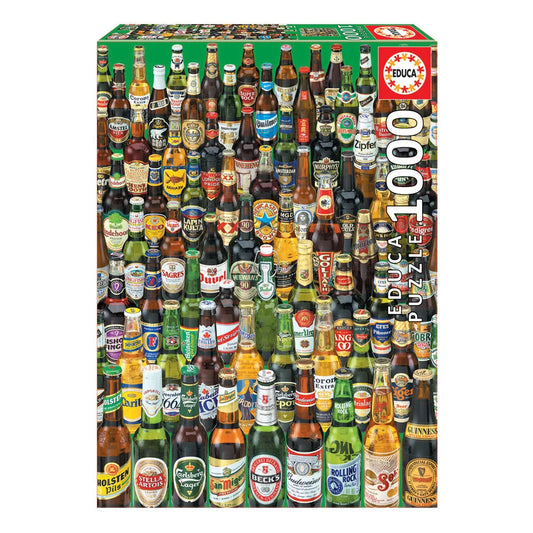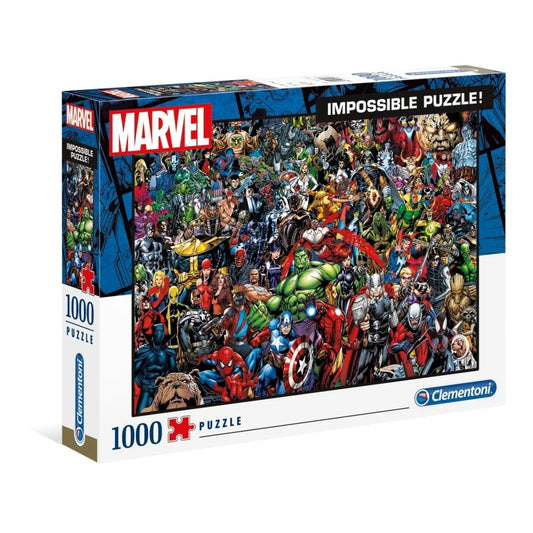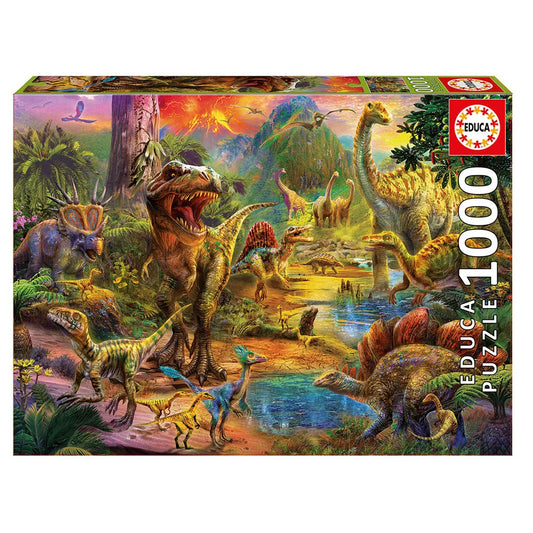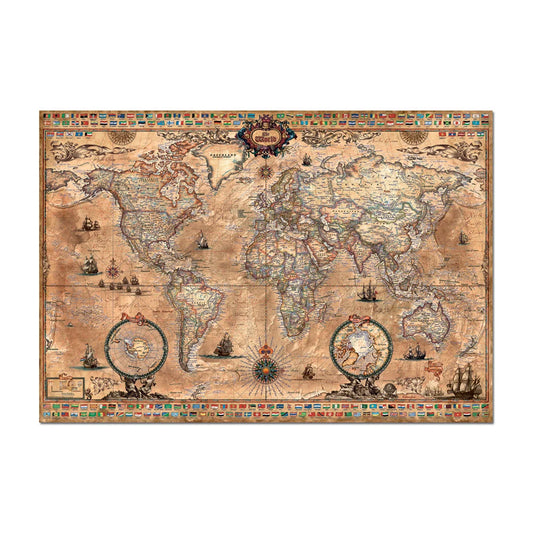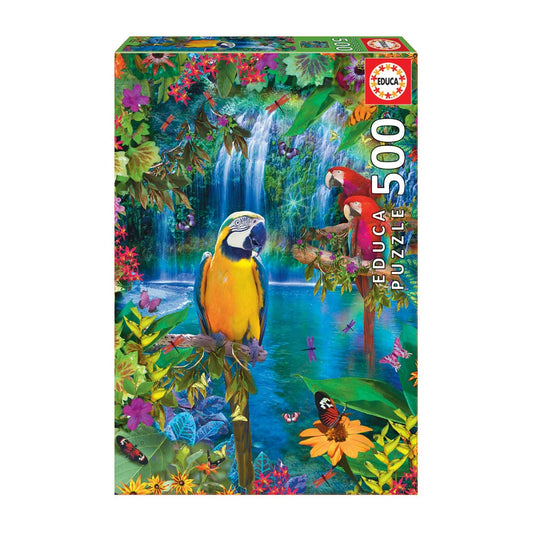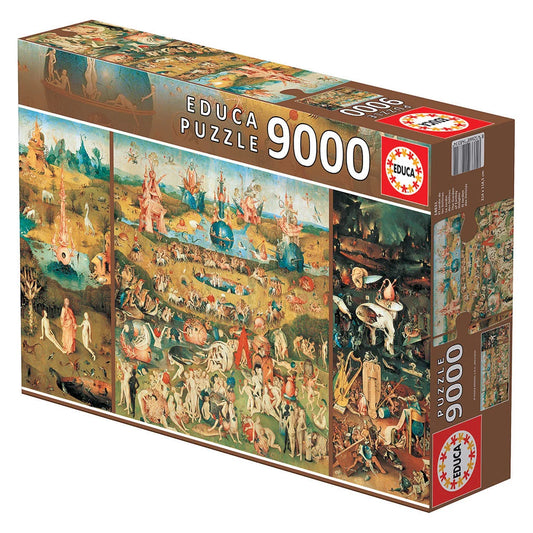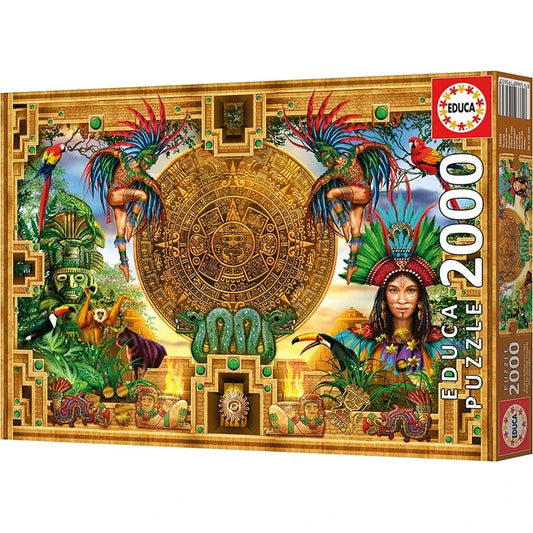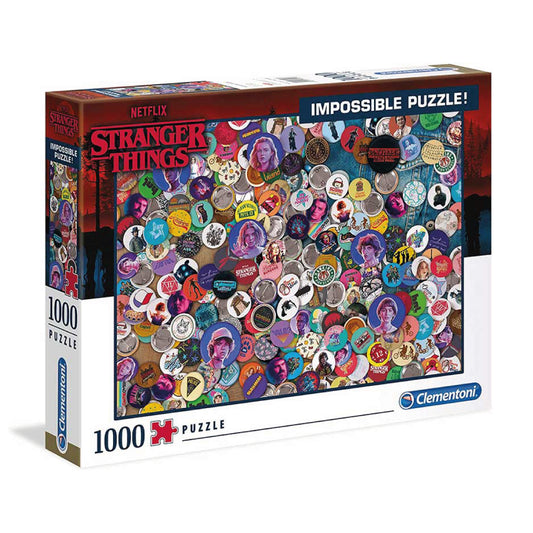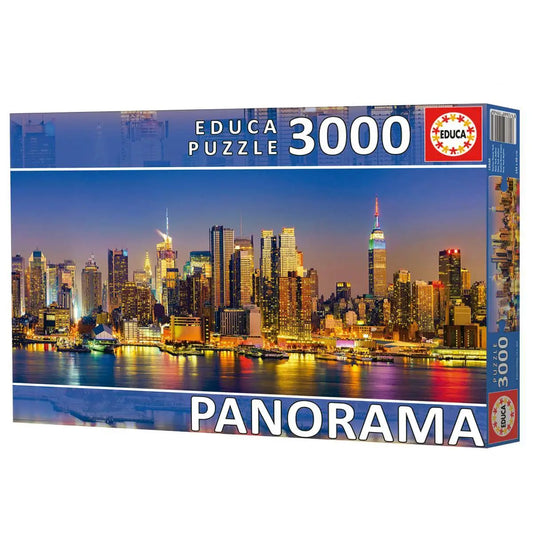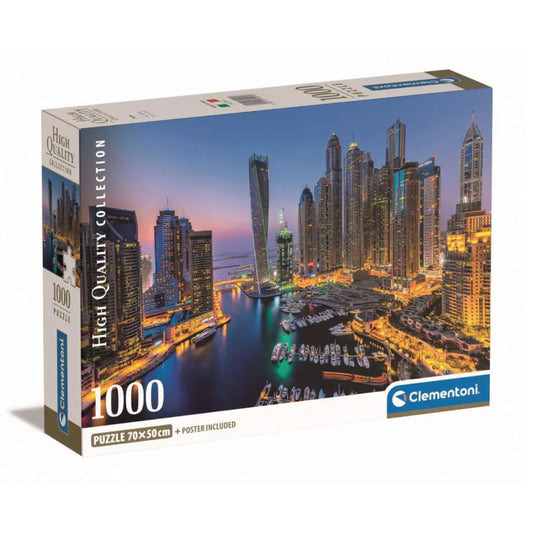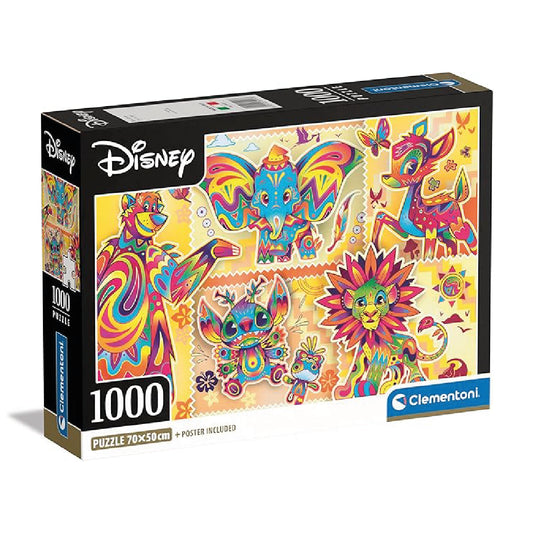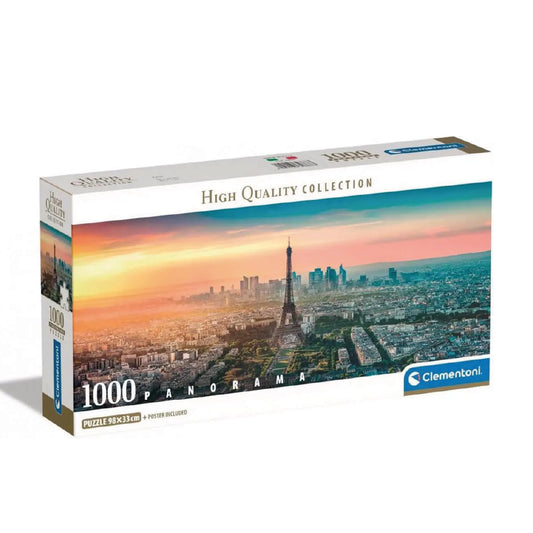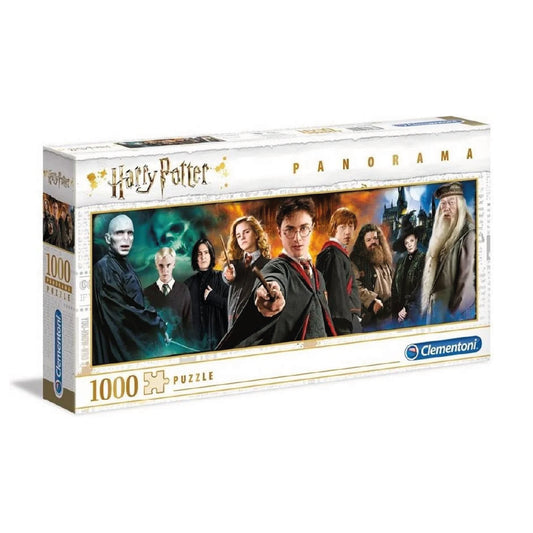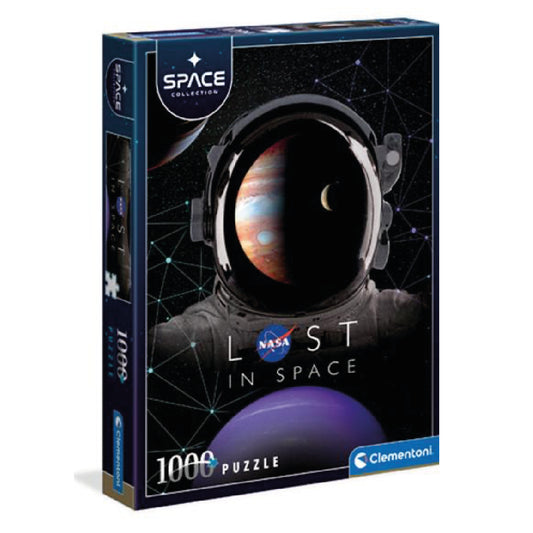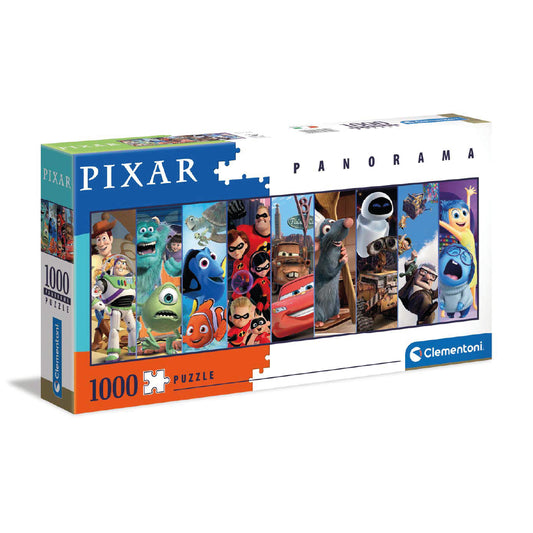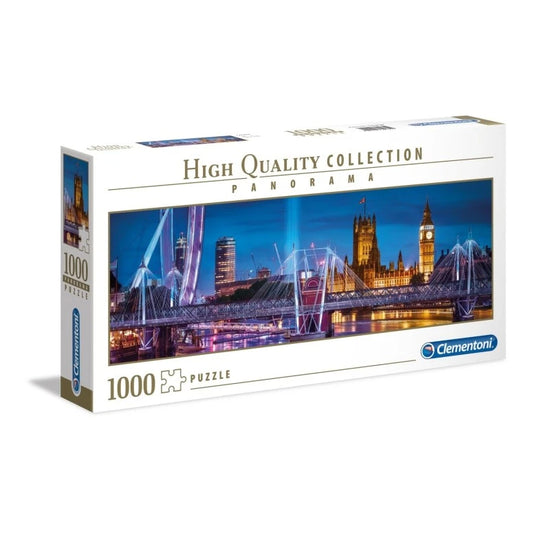
So, you've decided to take the big leap? Moving from "cute" 500-piece puzzles to the world of 1,000-piece puzzles ? Congratulations, my dear Watson—you've just entered the league of true puzzlers! But before you dive headfirst into Thanos like Captain America, let me tell you a few secrets that will transform this journey into an epic experience instead of a losing battle against a thousand tiny enemies.
1000-piece puzzles represent the perfect sweet spot between challenge and satisfaction. They're not as intimidating as the 2000+ piece monsters, but they offer enough complexity to keep you busy for days (or weeks, depending on your patience and the quality of your coffee).
Why are 1000-piece puzzles special?
The perfect balance between challenge and fun
A 1,000-piece puzzle is like that movie that manages to be both a blockbuster and an art form at the same time. It offers enough complexity to activate your analytical brain, but isn't so overwhelming that you'll give up at the first difficulty. That's precisely why they've become the gold standard of the puzzle world.
A typical 1,000-piece puzzle measures around 68 x 48 cm—large enough to create an impressive image, but still fit on a standard tabletop. It's like owning a work of art you created with your own hands.
Cognitive and therapeutic benefits
Doing 1,000-piece puzzles is active meditation disguised as fun. As you search for that specific piece of the blue sky (spoiler: they're all the same!), your brain enters a state of flow that psychologists love to study. This type of focused concentration:
- Reduces cortisol levels (the stress hormone)
- Improves working memory
- Develops patience and persistence
- Provides a genuine sense of achievement
It's therapy without paying a therapist—although he'll probably still recommend puzzles!
The Biggest Beginner Mistakes (and How to Avoid Them)
Mistake #1: Choosing the wrong image
Not all 1,000-piece puzzles are created equal. That beautiful starry sky puzzle may seem poetic, but it'll be your personal nightmare. For beginners, avoid:
- Uniform skies : thousands of similar shades of blue
- Repetitive textures : water, sand, grass
- Very dark images : night puzzles are traps
- Complex geometric patterns : unless you're a masochist
Instead, opt for:
- Landscapes with distinct details : houses, trees, mountains
- Colorful urban scenes : markets, busy streets
- Classical art : famous paintings have chromatic variety
- Animal photographs : fur and textures are easier to distinguish
Mistake #2: Not preparing the space properly
Doing a 1,000-piece puzzle on a coffee table is like trying to perform heart surgery on a bus. You'll need:
- Suitable table : at least 80x60 cm
- Good lighting : preferably natural light or LED
- Non-slip base : to prevent parts from slipping
- Permanent location : where you can leave the completed puzzle between sessions
Mistake #3: Starting without a strategy
Blindly tackling a 1,000-piece puzzle is a recipe for frustration. Without a strategy, you'll spend hours randomly searching for pieces like Dory finding Nemo.
The Ultimate Strategy for 1000-Piece Puzzles
Phase 1: Preparation and reconnaissance (30 minutes)
Before you begin, study the image on the box for 5-10 minutes. Identify:
- Predominant colors
- Areas of greatest contrast
- Distinctive elements (objects, people, structures)
- Areas that will be more challenging
Then, dump out all the pieces and turn them face up. Yes, all 1,000 of them! It's a lot of work, but it will save you hours later.
Phase 2: Strategic Separation (45 minutes)
Here's the secret the pros use: don't look for specific pieces, organize them by features :
- Separate the edge pieces (edges) — usually about 120-140 pieces
- Organize by primary colors — create groups of blues, greens, reds, etc.
- Identify pieces with unique elements — text, faces, specific objects
Phase 3: Frame Construction (60-90 minutes)
Always start with the edges. It's psychologically comforting to have a defined structure, and it will make everything that follows easier. Corner pieces are the easiest to identify—they have two smooth sides.
Pro tip: If you're having trouble with borders, group them by border type (top, bottom, sides) using the image as a reference.
Phase 4: Zone Filling (for the rest of your life!)
Now comes the fun (and challenging) part. Work across different areas:
- Start with the areas with the most contrast and unique details.
- Leave the skies and waters for last
- Use the "puzzle within a puzzle" technique — complete entire objects before connecting them
How long does it really take?
Here's the million-dollar question: how long will it take? The honest answer is: it depends on many factors.
Beginner Puzzler : 15-25 hours (spread over several weeks) Experienced Puzzler : 8-15 hours Obsessive Puzzler : 6-10 hours (in marathon sessions)
But don't stress about the time! Some puzzles can be solved in intensive weekends, others can last months. The important thing is to enjoy the process, not rush to the finish line.
Practical recommendations for success
Establish a sustainable routine
Don't try to do everything at once. Sessions of 45–90 minutes are ideal—enough time for significant progress, but not so long that you get eyestrain or frustrated.
use tools that make life easier
- Puzzle mat : allows you to save your work in progress
- Organizer boxes : to separate items by color/characteristics
- Magnifying glass : for puzzles with very small details
- Good chair : you'll spend hours sitting, take care of your back
Keeps you motivated
- Photograph progress : it's satisfying to see the evolution
- Celebrate milestones : 25%, 50%, 75% complete deserve recognition
- Share the experience : show your friends, make it a social event
When you get stuck (and you will get stuck)
All experienced puzzlers know that moment: you have 50 pieces left and none of them seem to fit anywhere. It's normal! Strategies to overcome:
- Take a break of at least an hour
- Change your perspective — look at the puzzle from different angles
- Focus on a specific area instead of searching randomly
- Check that there are no missing pieces underneath others.
The best themes for beginners
Vintage maps and illustrations
Old maps are great for beginners because they have text, distinct colors, and clear borders. Plus, you learn geography while having fun!
Iconic movie scenes
Puzzles based on films like "Casablanca" or "The Godfather" offer visual variety and a touch of nostalgia that makes the process more engaging.
Impressionist art
Van Gogh, Monet, Renoir—the Impressionists created works perfect for puzzles. Their distinct brushstrokes and vibrant colors make it easy to identify the pieces.
Photo collages
Puzzles that combine multiple photographs are great because each section has different visual characteristics, making it easier to separate and assemble.
Progression: what to do next
Once you master 1000-piece puzzles, you have several options for progressing:
- Increase difficulty : 1500 or 2000 pieces
- Explore different formats : round puzzles, 3d puzzles
- Most challenging themes : abstract art, monochrome photographs
- Double-Sided Puzzles : For Certified Masochists
Conclusion: The journey of a thousand pieces begins with a single piece
1000-piece puzzles are more than just a pastime—they're a journey of self-discovery, patience, and gradual satisfaction. Each piece you fit together is a small victory, each completed section a milestone achieved.
Don't be intimidated by the sheer number. Remember: even the most experienced puzzlers started somewhere, probably with the same mix of excitement and apprehension you feel now.
The secret is to get started, stay consistent, and, most importantly, have fun in the process. Because, at the end of the day, it's not just about completing a puzzle—it's about creating something beautiful with your own hands, one piece at a time.
If you're ready to take on the challenge, explore our collection of 1,000-piece puzzles in the Puzzle Shop . From stunning landscapes to classic works of art, we have the perfect puzzle for your first adventure into the world of a thousand pieces.
Because every great journey begins with a single step — or in this case, a single piece.

